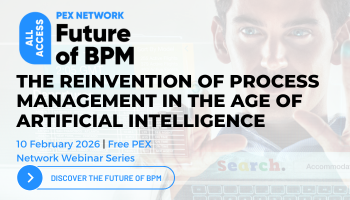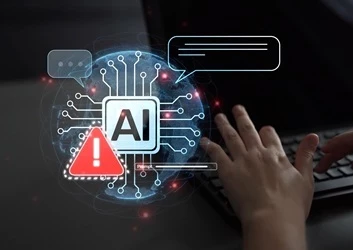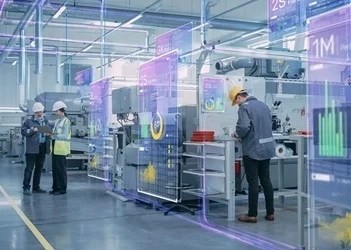3 ways process excellence fixes failing AI investment
Companies that combine process excellence with AI don’t just get better ROI – they build exponential capabilities
Add bookmark
US$6.2 billion – that’s how much money companies wasted on artificial intelligence (AI) projects that failed to deliver ROI in 2024.
The promise was seductive: AI would revolutionize operations, predict failures before they happen and optimize everything from inventory to energy consumption.
The reality? Most AI implementations are expensive science experiments that generate interesting insights but little business value.
Join the PEX Network community

Don't miss any news, updates or insider tips from PEX Network by getting them delivered to your inbox. Sign up to our newsletter and join our community of experts.
Learn MoreThe missing link: Process excellence as AI’s foundation
After deploying AI solutions across pharmaceutical contract development and manufacturing organizations (CDMOs), electronics manufacturing and biotech production facilities, I’ve discovered the inconvenient truth: AI amplifies whatever processes you feed it. Feed it messy, inconsistent, poorly understood processes and you get expensive noise. Feed it standardized, optimized, well-controlled processes – you get transformational ROI.
3 ways process excellence creates AI success
1. Data integrity as a competitive weapon
AI models are only as good as their training data. Most companies have data but they don't have process-validated data.
Case example: Before implementing predictive quality algorithms at a medical device manufacturer, we spent three months mapping 200+ quality parameters, standardizing measurement protocols and eliminating process variations. The AI model’s accuracy improved 35 percent and false-positive alerts decreased 67 percent. The ROI? US$1.8 million in prevented recalls and 40 percent reduction in quality investigation time.
2. Problem definition that AI can actually solve
AI excels at pattern recognition and optimization, but only when you’ve clearly defined what needs to be optimized. Process excellence methodologies like DMAIC ensure you’re solving the right problem with the right metrics.
Case example: A pharmaceutical CDMO wanted to optimize batch cycle times using machine learning. Initial attempts failed because the problem was poorly scoped. After applying root cause analysis and process mapping, we discovered the real constraint wasn’t equipment performance – it was material flow logistics. The AI solution focused on predictive material staging, reducing cycle times 22 percent and increasing throughput $3.2 million annually.
3. Change readiness that turns insights into action
AI generates recommendations; humans implement them. Without a culture of continuous improvement and data-driven decision making, AI insights sit unused in dashboards.
Case example: An electronics manufacturer implemented AI-driven yield optimization that recommended real-time parameter adjustments. Initial adoption was 12 percent because operators didn’t trust the recommendations. After implementing Lean culture practices – standard work, visual management and improvement kata – adoption increased to 87 percent. The result: 11 percent yield improvement and ROI achieved in 4.2 months.
Join us at All Access: AI in Business Transformation 2025 and learn how to future-proof your business with the right strategy and latest technology!
The process-first AI implementation framework
Phase 1: Process readiness assessment (weeks 1-4)
- Map end-to-end value streams.
- Identify and eliminate major process variations.
- Establish data collection standards and validation protocols.
Phase 2: AI solution design (weeks 5-8)
- Define success metrics tied to business outcomes.
- Design AI applications that complement human decision-making.
- Create feedback loops for continuous model improvement.
Phase 3: Integrated deployment (weeks 9-16)
- Deploy AI and process improvements simultaneously.
- Train users on both technical tools and problem-solving methodologies.
- Measure behavior change alongside technical performance.
The multiplication effect
Companies that combine process excellence with AI don’t just get better ROI – they build exponential capabilities. Every process improvement creates better AI training data. Every AI insight reveals new process optimization opportunities. It becomes a virtuous cycle of continuous enhancement.
Your AI ROI checklist
Before your next AI investment, ask:
- Are our underlying processes standardized and controlled?
- Do we have clean, validated data flowing from these processes?
- Have we clearly defined the business problem AI should solve?
- Are our teams ready to act on AI-generated insights?
- Do we have continuous improvement culture to evolve the solution?
AI without process excellence is expensive experimentation. Process excellence without AI is limited optimization. Together, they create sustainable competitive advantage in an increasingly complex operational landscape.
The question isn’t whether AI will transform operations – it’s whether your processes are ready to be transformed.
All Access: Future of BPM 2026

You asked, and we listened. Business process management (BPM) remains the cornerstone technology for driving organizational transformation, according to the survey results featured in the latest PEX Report. As we look toward 2026 and beyond, generative AI, agentic AI, and intelligent process orchestration are redefining how processes are designed, executed, and optimized. BPM is your key to adapting swiftly and effectively in this new era.
PEX Network is bringing together industry leaders, technology innovators, and thought leaders to answer your biggest questions and explore the advancements reshaping business today. And you're invited. Register for free to save your spot now!
Register Now















